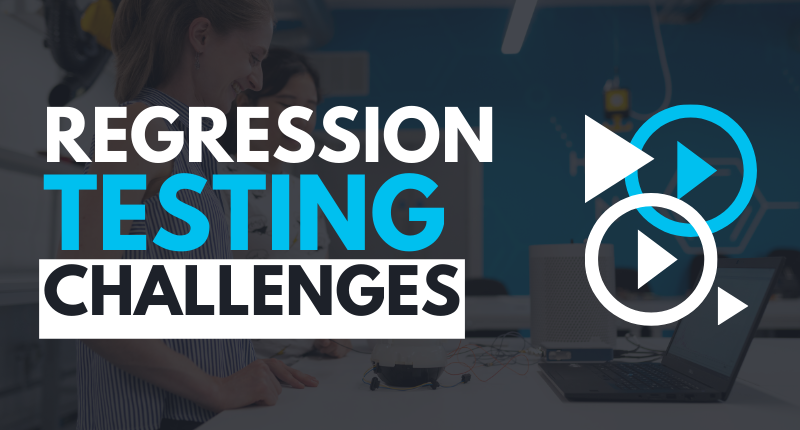Regression testing is a critical phase in software development that ensures new code changes don’t negatively impact existing functionality. However, it comes with its fair share of challenges. In this blog, we will explore common regression testing challenges and provide solutions and strategies to tackle them effectively.
1. Test Case Maintenance
Challenge: As your software evolves, so do your test cases. Maintaining and updating test cases to reflect changes in the application can be time-consuming and error-prone.
Solution: Employ test case management tools and version control systems to organize and track changes to your test cases. Implement a structured approach for updating test cases whenever there are changes in the application. Automated testing can help with this by automatically updating test cases as the application changes.
2. Test Data Management
Challenge: Managing test data can be complex, especially for large and complex systems. Data consistency and availability are key issues.
Solution: Implement a robust data management strategy. Use tools that allow you to create and manage test data efficiently, including data generation tools, data masking, and data cloning. Consider using production-like data whenever possible to simulate real-world scenarios accurately.
3. Test Environment Set-Up
Challenge: Setting up and configuring test environments to mimic production can be a significant bottleneck in regression testing.
Solution: Embrace containerization and virtualization technologies like Docker and Kubernetes. These tools enable you to create and manage test environments consistently and efficiently. Automate environment setup as part of your Continuous Integration/Continuous Deployment (CI/CD) pipeline to ensure a quick and reliable environment setup for testing.
4. Test Execution Time
Challenge: Running regression tests can be time-consuming, especially as the application grows. Long test execution times can lead to delays in releasing updates.
Solution: Parallelize and distribute test execution across multiple machines or virtual environments. Additionally, prioritize test cases based on their importance, focusing on critical paths and high-risk areas first. Implement continuous testing in your CI/CD pipeline to catch issues early, reducing the need for extensive regression testing.
5. Test Coverage
Challenge: Ensuring comprehensive test coverage can be challenging, and often some parts of the application remain untested.
Solution: Employ a risk-based testing approach, focusing on critical and high-impact areas first. Utilize code coverage analysis tools to identify areas with low test coverage and create additional test cases accordingly. Regularly review and update your test suite to maintain sufficient coverage.
6. Test Automation Challenges
Challenge: Test automation can be challenging due to changing UI elements, complex workflows, and evolving technologies.
Solution: Invest in robust test automation frameworks and tools that support various application types and platforms. Implement Page Object Model (POM) and maintain a centralized repository for test automation scripts. Regularly update scripts to adapt to changes in the application and use automation best practices to make scripts more maintainable.
7. Reporting and Analysis
Challenge: Gathering and analyzing regression test results for quick decision-making can be difficult, especially in large-scale projects.
Solution: Implement automated reporting and analysis tools that provide real-time insights into test results. Use dashboards and visual representations to quickly identify issues and their severity. Integrate these tools with your CI/CD pipeline for instant feedback.
8. Test Environment Variability
Challenge: Differences between test and production environments can lead to false positives and negatives in regression testing.
Solution: Standardize the test environment as closely as possible to the production environment. Use tools and techniques like infrastructure as code (IaC) to ensure environment consistency. Perform regular environment validation to catch discrepancies early.
9. Continuous Integration and Continuous Deployment (CI/CD) Challenges
Challenge: Integrating regression testing into a CI/CD pipeline can be complex, especially for legacy systems.
Solution: Gradually introduce automation into your CI/CD process. Start with unit tests and gradually expand to integration and end-to-end tests. Implement feature flags to safely release new functionality and perform testing in parallel with production use.
In conclusion, regression testing is essential for maintaining software quality, but it comes with its fair share of challenges. Addressing these challenges requires a combination of effective strategies, automation, and the right tools. By continuously evolving your regression testing approach, you can ensure that your software remains robust, reliable, and adaptable to change in the ever-evolving world of software development.




